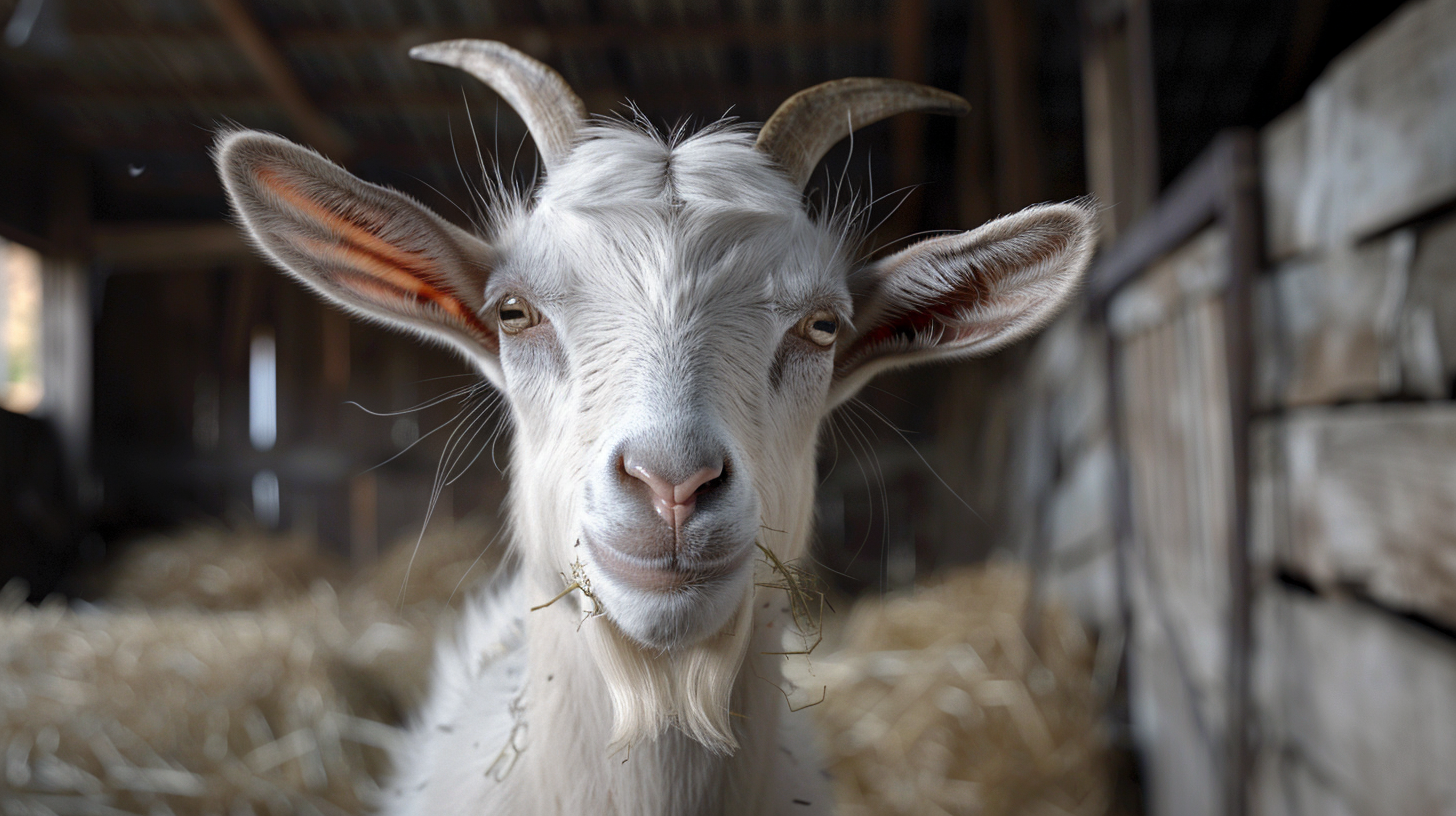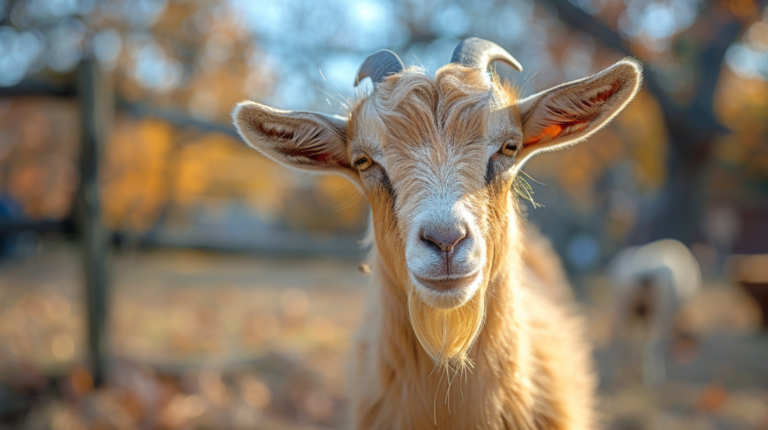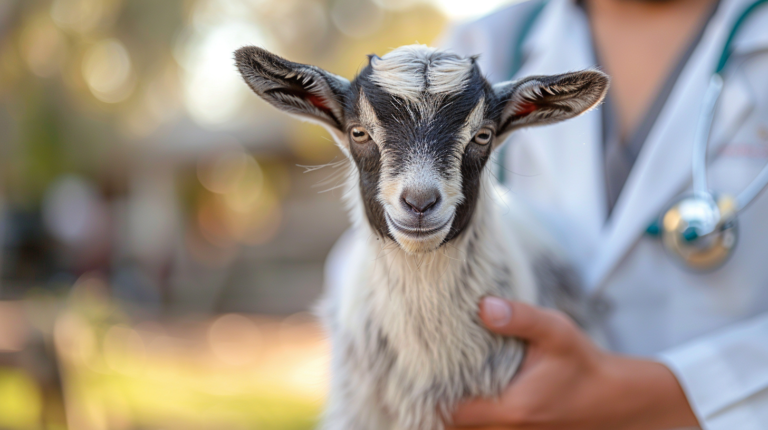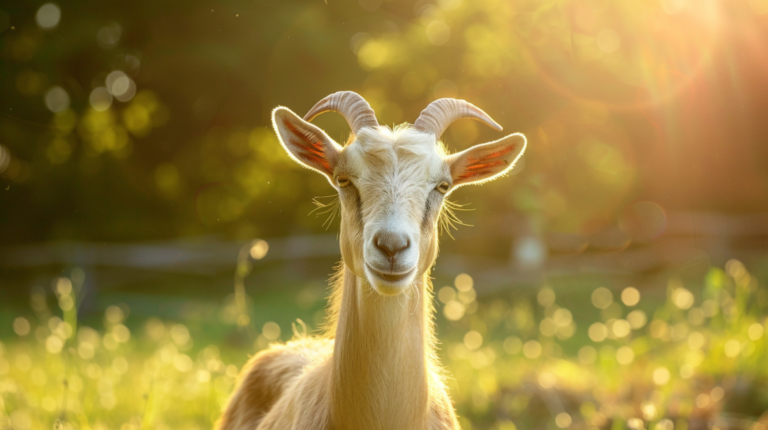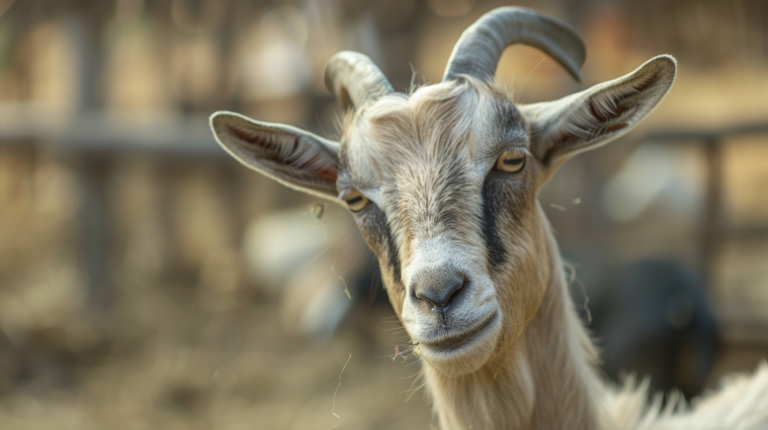Discover the 5 dangerous signs of vitamin toxicity in goats. Learn to identify goat vitamin overdose signs and protect your herd from serious health complications.
Table of Contents
Keeping goats healthy requires a delicate balance of nutrition, and while vitamins are essential for your goat’s wellbeing, too much of a good thing can become dangerous. Vitamin toxicity in goats is a serious concern that many goat owners overlook, focusing primarily on deficiencies rather than overdoses. Understanding the warning signs of vitamin overdose can mean the difference between a healthy herd and potentially fatal health complications.
Unlike humans, goats have unique digestive systems that can synthesize many vitamins naturally through their rumen bacteria. However, when well-meaning owners provide excessive supplementation or when goats accidentally consume large quantities of vitamin-rich feeds, toxicity can occur rapidly. The symptoms of vitamin toxicity in goats can range from subtle behavioral changes to severe neurological damage, making early detection crucial for successful treatment.
In this comprehensive guide, we’ll explore the five most dangerous signs of vitamin toxicity that every goat owner should recognize, understand the specific vitamins most likely to cause problems, and learn how to prevent these potentially life-threatening situations. Whether you’re a seasoned goat keeper or new to caprine care, this information could save your goat’s life.
Understanding Vitamin Toxicity in Goats
Vitamin toxicity, also known as hypervitaminosis, occurs when goats consume excessive amounts of vitamins, particularly fat-soluble vitamins A, D, E, and K. Unlike water-soluble vitamins that can be easily excreted through urine, fat-soluble vitamins accumulate in the body’s fatty tissues and liver, making overdose more likely and more dangerous.
| Symptom Category | Specific Signs | Severity Level | Time to Onset | Most Common Vitamins |
|---|---|---|---|---|
| Neurological | Disorientation, loss of coordination, tremors | High | Hours to days | Vitamin A, D |
| Gastrointestinal | Loss of appetite, diarrhea, vomiting | Medium | 1-3 days | Vitamin A, D, E |
| Musculoskeletal | Weakness, stiffness, lameness | Medium | Days to weeks | Vitamin D, E |
| Skin & Coat | Hair loss, skin lesions, dull coat | Low | Weeks | Vitamin A, E |
| Reproductive | Fertility issues, birth defects | High | Weeks to months | Vitamin A, D |
| Cardiovascular | Irregular heartbeat, weakness | High | Hours to days | Vitamin D, E |
| Bone & Joint | Joint swelling, bone deformities | Medium | Weeks to months | Vitamin D, A |
The Unique Goat Digestive System
Goats are ruminants with a four-chambered stomach system that allows them to synthesize most B vitamins and vitamin K naturally through bacterial fermentation in their rumen. This remarkable ability means that healthy goats with properly functioning rumens rarely need vitamin B or K supplementation. However, this natural production system can be disrupted by stress, illness, dietary changes, or antibiotic treatments.
The complexity of goat nutrition cannot be overstated. According to veterinary nutritionists, the interaction of minerals is astoundingly complex, and the most difficult task in raising goats is getting nutrition right, with vitamins and minerals being integral parts of proper nutrition. This complexity extends to vitamin toxicity, where even small overdoses can have cascading effects throughout the goat’s system.

Common Causes of Vitamin Toxicity
Several factors can lead to vitamin toxicity in goats:
Over-supplementation: Well-meaning owners often provide vitamin supplements without understanding their goat’s actual needs or the vitamin content of their regular feed.
Accidental consumption: Goats may gain access to vitamin-rich feeds, supplements, or even human medications containing high vitamin concentrations.
Inappropriate feed mixing: Adding vitamin supplements to already-formulated feeds can create dangerous imbalances.
Stress-induced feeding: During times of stress, illness, or environmental changes, some owners increase vitamin supplementation, potentially leading to toxicity.
Seasonal variations: Indoor goats may receive excessive vitamin D supplementation during winter months when natural sunlight synthesis is limited.
The 5 Dangerous Signs of Vitamin Toxicity in Goats
1. Neurological Symptoms and Behavioral Changes
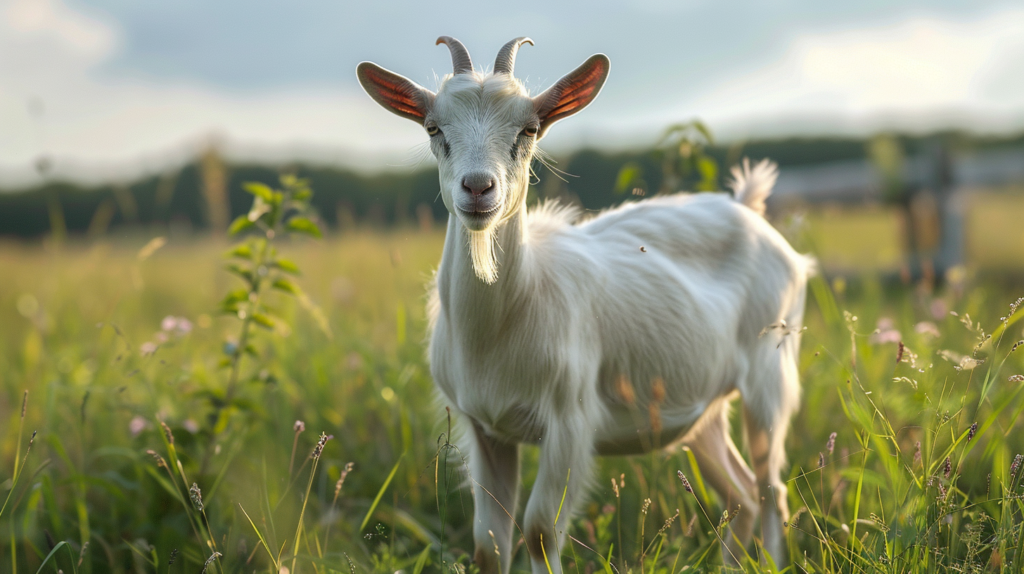
The most alarming and often first-noticed signs of vitamin toxicity in goats involve the nervous system. Goat vitamin overdose signs frequently manifest as neurological disturbances that can progress rapidly if left untreated.
Early neurological warning signs include:
- Disorientation and confusion
- Unusual head tilting or head pressing against objects
- Loss of coordination and stumbling
- Circling behavior or aimless wandering
- Difficulty standing or maintaining balance
- Tremors or muscle spasms
- Altered consciousness or dullness
Vitamin A toxicity particularly affects the nervous system, causing symptoms that can be confused with other conditions. Toxicity symptoms include nausea, vomiting, headache, dizziness, irritability, blurred vision, and muscular incoordination, though these human symptoms translate to observable behavioral changes in goats.
Thiamine (B1) deficiency-induced toxicity can occur when high-carbohydrate diets disrupt normal rumen function. Clinical signs of polioencephalomalacia include disorientation, dullness, aimless wandering, loss of appetite, circling, progressive cortical blindness, extensor spasms, and occasionally head pressing.
Action steps for neurological symptoms:
- Immediately isolate the affected goat
- Contact your veterinarian without delay
- Document all observed symptoms with timestamps
- Remove access to any vitamin supplements
- Monitor closely for progression of symptoms
2. Gastrointestinal Distress and Appetite Changes
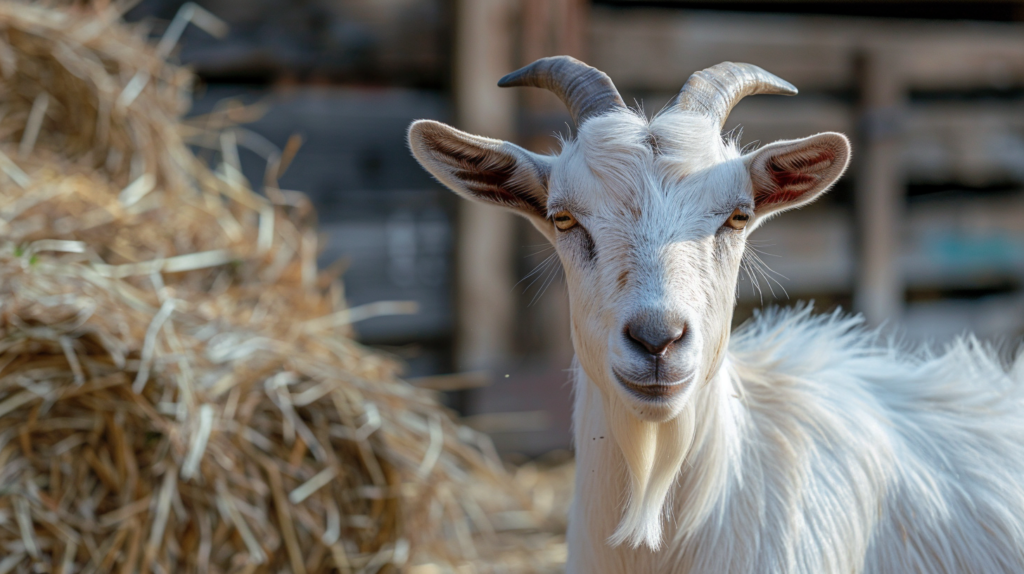
Digestive system disruption is another critical indicator of vitamin toxicity. The goat’s sensitive rumen ecosystem can be severely impacted by vitamin overdoses, leading to a cascade of digestive problems.
Common gastrointestinal signs include:
- Sudden loss of appetite (anorexia)
- Excessive drooling or difficulty swallowing
- Diarrhea or changes in stool consistency
- Vomiting or regurgitation (rare but serious in goats)
- Abdominal pain indicated by hunched posture
- Bloating or gas accumulation
- Unusual food preferences or rejection of normal feed
Vitamin D toxicity particularly affects the digestive system by disrupting calcium absorption and metabolism. The main complication is moderate to severe hypercalcemia, which can cause symptoms like vomiting, increased thirst and frequent urination.
Monitoring digestive health:
- Track daily feed intake and water consumption
- Monitor rumen activity by listening for normal digestive sounds
- Check stool quality and frequency
- Watch for signs of dehydration
- Note any changes in eating patterns or preferences
3. Musculoskeletal Problems and Weakness

Vitamin toxicity can severely impact the musculoskeletal system, causing weakness, joint problems, and mobility issues that may appear gradually or suddenly.
Physical manifestations include:
- General weakness and lethargy
- Muscle tremors or fasciculations
- Joint swelling or stiffness
- Difficulty rising or remaining standing
- Abnormal gait or limping
- Bone pain indicated by reluctance to move
- Postural abnormalities
Vitamin D toxicity is particularly dangerous for bone health. While vitamin D deficiency causes rickets with enlarged joints and bowed legs, toxicity can cause the opposite problem – excessive calcium deposition leading to brittle bones and joint problems.
Vitamin A overdose can cause bone abnormalities and joint problems, particularly in growing kids. The fat-soluble nature of vitamin A means it accumulates in tissues, potentially causing long-term skeletal issues.
Assessment techniques:
- Observe the goat’s ability to rise and walk normally
- Check for joint swelling or heat
- Note any reluctance to move or bear weight
- Monitor for changes in posture or stance
- Test reflexes and muscle tone gently
4. Skin and Coat Abnormalities
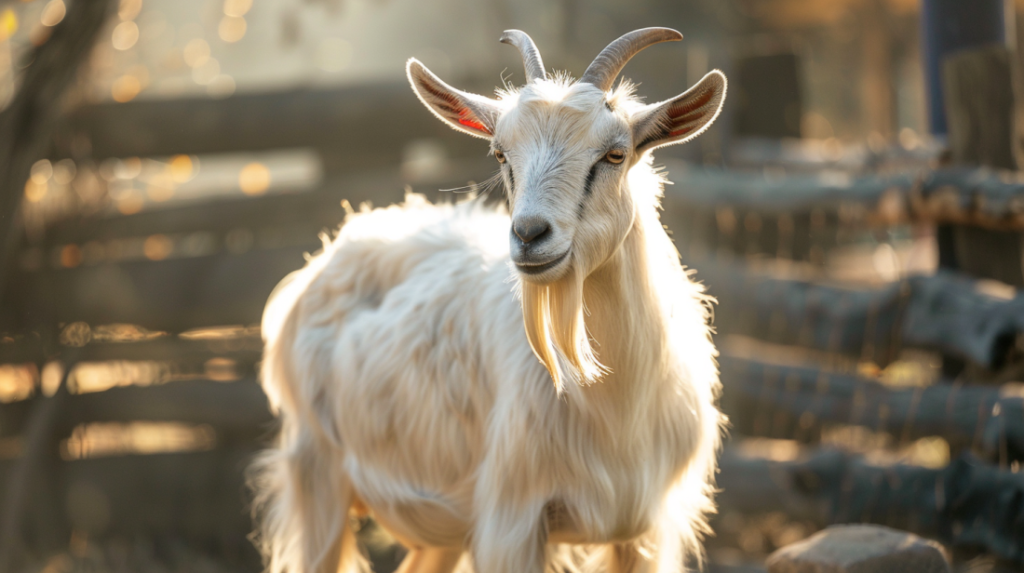
The integumentary system often provides visible clues to vitamin toxicity, with skin and coat changes being among the more observable symptoms for goat owners.
Dermatological signs include:
- Rough, dry, or brittle coat texture
- Excessive shedding or hair loss
- Skin lesions or sores
- Changes in skin color or pigmentation
- Increased susceptibility to skin infections
- Delayed wound healing
- Abnormal hoof growth or quality
Vitamin A toxicity significantly affects epithelial tissues. Vitamin A is necessary for normal epithelium, or skin, development and vision. When toxicity occurs, the skin’s protective barrier function becomes compromised, leading to increased infection risk and poor healing.
Vitamin E interactions with other vitamins can cause skin problems when overdosed. While vitamin E itself is generally non-toxic, excessive amounts can interfere with other vitamin absorption and utilization.
Skin assessment protocol:
- Examine the coat for texture and density changes
- Check for unusual shedding patterns
- Look for skin lesions, scratches, or slow-healing wounds
- Monitor hoof condition and growth patterns
- Note any changes in skin sensitivity or reaction to touch
5. Reproductive and Developmental Issues

Vitamin toxicity can have profound effects on reproductive performance and development, particularly in pregnant does and growing kids.
Reproductive symptoms include:
- Irregular estrus cycles or breeding problems
- Increased abortion rates or embryonic death
- Poor milk production in lactating does
- Delayed puberty in young goats
- Abnormal kid development
- Fertility problems in bucks
Developmental concerns:
- Stunted growth in kids
- Delayed tooth eruption
- Abnormal bone development
- Poor weight gain despite adequate nutrition
- Developmental delays in motor skills
Vitamin A toxicity during pregnancy can cause severe developmental abnormalities in kids. The timing of toxicity during gestation determines the type and severity of birth defects that may occur.
Reproductive monitoring:
- Track breeding dates and success rates
- Monitor pregnant does for signs of distress
- Record birth weights and kid development milestones
- Note any changes in milk production or quality
- Document any reproductive failures or abnormalities
| Strategy Category | Specific Actions | Implementation | Priority Level | Cost Factor |
|---|---|---|---|---|
| Nutrition Management | Use balanced commercial feeds, avoid over-supplementation | Daily feeding protocols | High | Low |
| Veterinary Guidance | Regular health checks, professional supplement recommendations | Monthly to quarterly visits | High | Medium |
| Record Keeping | Track supplement dosages, feeding schedules, health observations | Daily documentation | Medium | Low |
| Storage Management | Proper supplement storage, prevent access to concentrates | Secure storage systems | Medium | Low |
| Seasonal Adjustments | Modify supplementation based on pasture quality, weather | Quarterly assessment | Medium | Low |
| Technology Monitoring | Use feeding systems, health monitoring apps | Digital integration | Low | High |
| Emergency Protocols | Establish vet contact, first aid procedures | Prepare action plans | High | Low |
Specific Vitamins Most Likely to Cause Toxicity
Fat-Soluble Vitamins: The Primary Culprits
Vitamin A (Retinol) Vitamin A toxicity is among the most common and dangerous forms of vitamin overdose in goats. This vitamin is essential for vision, immune function, and epithelial tissue health, but excessive amounts can cause severe liver damage and neurological problems.
Common sources of excess vitamin A:
- Over-supplementation with vitamin A injections
- Excessive consumption of vitamin A-rich feeds
- Accidental access to vitamin supplements
- Poorly balanced commercial feeds
Vitamin D (Calciferol) Vitamin D toxicity disrupts calcium and phosphorus metabolism, leading to hypercalcemia and its associated complications. Vitamin D is produced in the skin of goats that are out in sunlight and should be provided in the diet of goats that are kept indoors.
Risk factors for vitamin D toxicity:
- Excessive supplementation in indoor goats
- Concurrent calcium supplementation
- Kidney disease affecting vitamin D metabolism
- Certain medications that affect vitamin D processing
Vitamin E (Tocopherol) While vitamin E is non-toxic to goats in most circumstances, excessive amounts can interfere with vitamin K absorption and blood clotting functions.
Vitamin K Vitamin K toxicity is rare due to natural rumen synthesis, but can occur with synthetic vitamin K supplementation, particularly in combination with certain medications.
Water-Soluble Vitamins: Lower Risk but Still Concerning
B Vitamins While generally less toxic due to their water-soluble nature, B vitamin toxicity can still occur, particularly with injectable forms or when rumen function is compromised.
Thiamine (B1) Complications A healthy, mature goat rumen should be able to make all of the B vitamins that a goat needs, but even a change in diet, if given too quickly, can throw the rumen off enough to cause a vitamin deficiency. Paradoxically, thiamine supplementation in goats with normal rumen function can sometimes cause imbalances.
Prevention Strategies: Keeping Your Goats Safe
Proper Nutrition Management
Feed Analysis and Planning
- Conduct regular feed analysis to understand vitamin content
- Work with a veterinary nutritionist to develop appropriate feeding programs
- Avoid adding supplements to already-formulated feeds
- Consider seasonal variations in vitamin requirements
Supplement Guidelines
- Use supplements only when specifically indicated by testing or veterinary advice
- Follow label directions precisely
- Store supplements properly to prevent accidental overdose
- Monitor supplement expiration dates
Environmental Factors
- Ensure adequate sunlight exposure for natural vitamin D synthesis
- Provide appropriate shelter without completely blocking sun access
- Maintain proper ventilation in housing areas
- Consider seasonal lighting needs for indoor goats
Monitoring and Record Keeping
Health Monitoring Systems
- Establish regular health check routines
- Maintain detailed records of feed consumption and supplements
- Track reproductive performance and growth rates
- Document any health issues or treatments
Professional Partnerships
- Establish relationships with qualified veterinarians
- Consider nutritionist consultations for large herds
- Participate in herd health programs
- Stay informed about current research and recommendations
Emergency Response and Treatment
Immediate Action Steps
When vitamin toxicity is suspected, immediate action can prevent serious complications or death:
Step 1: Assess and Isolate
- Quickly assess the severity of symptoms
- Isolate affected goats to prevent spread if infectious causes are suspected
- Remove access to all vitamin supplements and suspect feeds
Step 2: Contact Professionals
- Call your veterinarian immediately
- Provide detailed information about symptoms and recent feeding changes
- Be prepared to describe supplement usage and feed sources
Step 3: Supportive Care
- Ensure access to fresh water
- Provide supportive care as directed by your veterinarian
- Monitor vital signs and symptom progression
- Document all observations for veterinary consultation
Veterinary Treatment Options
Diagnostic Procedures
- Blood tests to measure vitamin levels
- Liver function tests
- Neurological examinations
- Imaging studies if indicated
Treatment Protocols
- Activated charcoal to reduce absorption
- Fluid therapy for dehydration
- Specific antidotes when available
- Supportive care for organ function
Long-term Management and Recovery
Recovery Expectations
Recovery from vitamin toxicity depends on several factors:
- Type and amount of vitamin involved
- Duration of toxicity before treatment
- Overall health of the affected goat
- Promptness and appropriateness of treatment
Potential outcomes:
- Complete recovery with no lasting effects
- Partial recovery with some permanent damage
- Chronic health issues requiring ongoing management
- Severe cases may result in death despite treatment
Prevention of Recurrence
System Improvements
- Review and modify feeding protocols
- Implement better storage and handling procedures
- Educate all caretakers about vitamin toxicity risks
- Establish emergency response procedures
Ongoing Monitoring
- Regular health assessments
- Periodic blood work to monitor vitamin levels
- Continued observation for subtle signs of problems
- Adjustment of prevention strategies as needed
| Timeline Phase | Diagnostic Actions | Treatment Approach | Urgency Level | Expected Recovery |
|---|---|---|---|---|
| 0-2 Hours | Initial symptom assessment, remove supplement access | Stabilize goat, contact veterinarian immediately | Immediate | Crisis management |
| 2-6 Hours | Veterinary examination, blood work, vitamin level testing | IV fluids, supportive care, specific antidotes if available | Immediate | Stabilization phase |
| 6-24 Hours | Monitor vital signs, assess neurological function | Continued supportive care, symptom management | Urgent | Initial response |
| 1-3 Days | Follow-up blood work, organ function tests | Adjust treatment based on response, nutritional support | Urgent | Early improvement |
| 3-7 Days | Assess recovery progress, monitor for complications | Gradual return to normal diet, reduced monitoring | Routine | Significant improvement |
| 1-2 Weeks | Complete health evaluation, vitamin level recheck | Resume normal activities, dietary adjustments | Routine | Near full recovery |
| 2-4 Weeks | Long-term monitoring, reproductive health check | Prevention planning, nutritional counseling | Routine | Complete recovery |
| 1-3 Months | Follow-up assessments, breeding evaluation | Long-term management plan, prevention strategies | Routine | Full health restoration |
Special Considerations for Different Goat Categories
Pregnant and Lactating Does
Pregnant and lactating does have unique nutritional needs and increased susceptibility to vitamin toxicity. The developing fetus and milk production create additional demands on the doe’s system while also increasing the risk of toxicity from excessive supplementation.
Specific concerns:
- Increased vitamin requirements during pregnancy and lactation
- Risk of teratogenic effects from vitamin A toxicity
- Calcium metabolism disruption from vitamin D toxicity
- Impact on milk quality and kid development
Growing Kids
Young goats have rapidly developing systems that are particularly vulnerable to vitamin imbalances. Their smaller body size means that even small amounts of excess vitamins can cause significant problems.
Age-related factors:
- Rapid growth increases nutritional demands
- Developing organs are more susceptible to toxicity
- Smaller body size concentrates toxic effects
- Longer-term developmental consequences
Breeding Bucks
Male goats used for breeding have specific nutritional requirements that support reproductive function. Vitamin toxicity can significantly impact fertility and breeding performance.
Reproductive considerations:
- Vitamin A is crucial for semen production and quality
- Excess vitamins can reduce libido and breeding behavior
- Toxicity may affect sperm development and viability
- Recovery of reproductive function may be prolonged
Understanding Goat Behavior and Toxicity Signs
Normal vs. Abnormal Behavior
Understanding normal goat behavior is crucial for recognizing early signs of vitamin toxicity. Goats are naturally curious, active animals with predictable behavioral patterns.
Normal goat behaviors:
- Active foraging and exploration
- Social interactions with herd members
- Regular eating and drinking patterns
- Normal sleep and rest cycles
- Appropriate responses to environmental stimuli
Behavioral red flags:
- Isolation from the herd
- Reduced activity or lethargy
- Abnormal postures or movements
- Changes in vocalization patterns
- Altered eating or drinking behavior
Early Warning System
Developing an early warning system helps identify problems before they become critical:
Daily observation checklist:
- General activity level and alertness
- Appetite and water consumption
- Social interactions and herd dynamics
- Physical appearance and posture
- Elimination patterns and stool quality
Weekly assessment:
- Body condition scoring
- Coat quality and skin health
- Hoof condition and growth
- Reproductive status (if applicable)
- Growth rate monitoring (for kids)
Nutrition Balance: The Key to Prevention
Understanding Nutritional Interactions
Vitamins don’t work in isolation – they interact with minerals, other vitamins, and various nutrients in complex ways. Understanding these interactions is crucial for preventing toxicity.
Key vitamin interactions:
- Vitamin A and zinc work together for immune function
- Vitamin D, calcium, and phosphorus must be balanced for bone health
- Vitamin E and selenium function as antioxidants
- B vitamins work as a complex for metabolic functions
Feeding Program Development
Assessment components:
- Soil and water analysis for mineral content
- Forage analysis for vitamin and mineral content
- Individual goat assessment for specific needs
- Seasonal variation considerations
Program implementation:
- Gradual introduction of any dietary changes
- Regular monitoring and adjustment
- Professional consultation for complex cases
- Documentation of all feeding practices
Cost-Effective Prevention Strategies
Economic Impact of Vitamin Toxicity
Vitamin toxicity can have significant economic consequences for goat operations:
Direct costs:
- Veterinary treatment expenses
- Medication and supportive care costs
- Loss of productivity during illness
- Potential death losses
Indirect costs:
- Reduced reproductive performance
- Delayed growth and development
- Increased susceptibility to other diseases
- Time and labor for additional care
Budget-Friendly Prevention
Low-cost prevention strategies:
- Proper feed storage and handling
- Regular observation and early intervention
- Basic record keeping systems
- Education and training for caretakers
Investment priorities:
- Quality feed analysis
- Appropriate supplementation programs
- Veterinary consultation for program development
- Emergency response planning
Frequently Asked Questions
Everything you need to know about vitamin toxicity in goats – get expert answers to the most common questions from goat owners.
Seasonal Considerations and Vitamin Toxicity
Winter Management
Winter months present unique challenges for goat nutrition and vitamin toxicity prevention:
Winter risk factors:
- Reduced sunlight exposure affecting vitamin D synthesis
- Increased reliance on stored feeds
- Tendency to over-supplement during cold weather
- Reduced activity levels affecting metabolism
Prevention strategies:
- Careful vitamin D supplementation for indoor goats
- Quality testing of stored feeds
- Appropriate lighting in housing areas
- Monitoring of supplement storage conditions
Summer Management
Summer also presents specific challenges:
Summer concerns:
- Heat stress affecting appetite and metabolism
- Changes in pasture quality and composition
- Increased water consumption affecting vitamin concentration
- Potential for vitamin degradation in stored supplements
Management adaptations:
- Shade provision and cooling systems
- Adjusted feeding schedules
- Proper supplement storage in heat
- Monitoring for heat-related stress
Technology and Modern Goat Management
Record Keeping Systems
Modern technology offers tools for better goat management and toxicity prevention:
Digital solutions:
- Herd management software for tracking health and nutrition
- Mobile apps for daily observation recording
- Cloud-based systems for data storage and analysis
- Integration with veterinary records
Traditional methods:
- Paper-based record keeping systems
- Visual observation charts
- Simple tracking methods
- Basic health monitoring protocols
Monitoring Devices
Available technologies:
- Automated feed monitoring systems
- Water consumption tracking devices
- Activity monitoring collars
- Temperature and health monitoring sensors
Cost-benefit analysis:
- Initial investment vs. long-term savings
- Complexity vs. ease of use
- Maintenance requirements
- Integration with existing systems
Research and Future Developments
Current Research
Ongoing research continues to improve our understanding of vitamin toxicity in goats:
Research areas:
- Genetic factors affecting vitamin metabolism
- Environmental influences on vitamin requirements
- Improved diagnostic methods
- New treatment approaches
Practical applications:
- Better supplementation guidelines
- Improved feed formulations
- Enhanced diagnostic tools
- More effective treatment protocols
Future Trends
Emerging developments:
- Precision nutrition approaches
- Personalized supplementation programs
- Advanced monitoring technologies
- Integrated health management systems
For more expert pet care tips and product recommendations, visit BlithePet.com — your trusted source for pet wellness.
Conclusion
Vitamin toxicity in goats is a serious but preventable condition that requires vigilant monitoring and proper nutrition management. By understanding the five dangerous signs – neurological symptoms, gastrointestinal distress, musculoskeletal problems, skin abnormalities, and reproductive issues – goat owners can take swift action to protect their animals’ health.
The key to prevention lies in understanding that goats’ unique digestive systems produce many vitamins naturally, making supplementation often unnecessary and potentially harmful. Supplementation of goat minerals is required for good health but improper supplementation can be dangerous, even deadly. This sobering reminder emphasizes the importance of working with veterinary professionals to develop appropriate nutrition programs.
Remember that early detection and prompt veterinary intervention offer the best chance for recovery. Regular observation, proper record keeping, and maintaining good relationships with qualified veterinarians form the foundation of effective goat health management. The investment in prevention and early intervention far outweighs the costs of treating advanced vitamin toxicity cases.
As responsible goat owners, we must balance providing adequate nutrition with avoiding the dangers of over-supplementation. By staying informed about goat vitamin overdose signs and maintaining vigilant monitoring of our herds, we can ensure our goats remain healthy and productive members of our farming operations.
Have a similar experience with your pet? Share it in the comments below!

